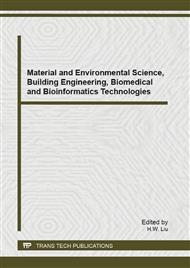p.638
p.643
p.651
p.655
p.659
p.665
p.669
p.673
p.677
A Bearing Fault Diagnosis Method Using Fusion of Lie Group Classifier and GA
Abstract:
A novel bearing fault diagnosis method based on Lie group was proposed, and genetic algorithm (GA) was introduced to optimize feature amount. This method was applied to inner ring fault, outer ring fault and rolling element fault of rolling bearing. Firstly, the rolling bearing vibration signal was decomposed as intrinsic model functions (IMF) by using the empirical mode decomposition (EMD) method. The energy of every IMF and the singular value of the IMF matrix were chosen as features. The Shannon and Renyi entropy of the energy and singular value distribution were also extracted. Secondly genetic algorithm was used to reduce feature redundancy, with lowest classifier error rate and least feature amount as finess function. At last, a comparison was made between this method and least square support vector machine (LSSVM).The results showed that Lie group clkassifier was more sensitivce to feature. This method could use less feature amount to diagnose fault.
Info:
Periodical:
Pages:
659-662
Citation:
Online since:
September 2013
Authors:
Price:
Сopyright:
© 2013 Trans Tech Publications Ltd. All Rights Reserved
Share:
Citation:


